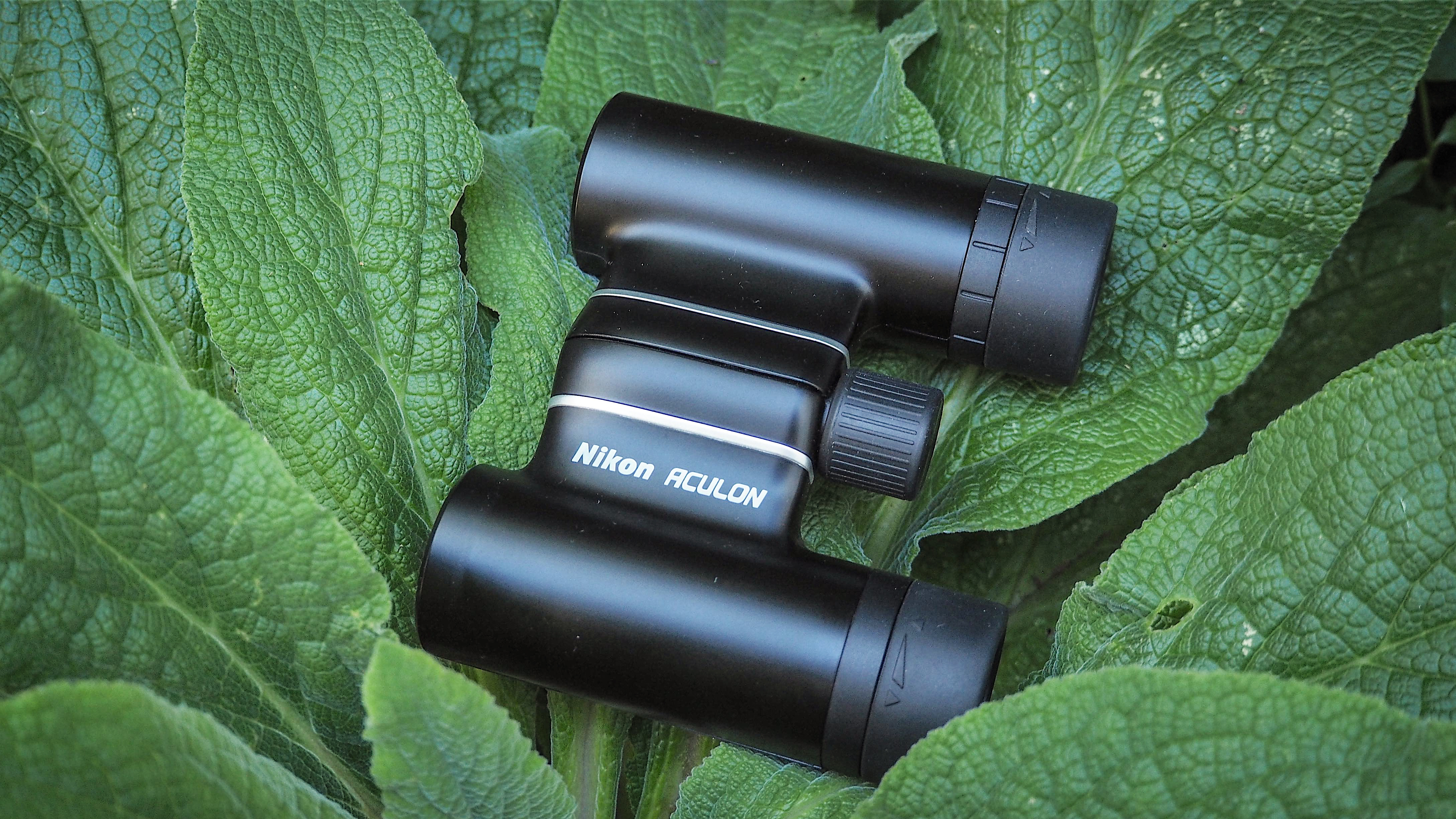
Looking for an ideal everyday binocular, or one that will fit unobtrusively in a backpack or even pocket, while traveling? Enter the Nikon Aculon T02 10x21, a compact palm-sized device available in a variety of colours, including sensible black, futuristic-looking white, blue and red, but curiously not a Nikon shade of yellow. There’s also a 8x21 model available.
Without testing it out for yourself it’s hard to convey just how diminutive the design of this 10x21 example is – imagine it being roughly the size of a beermat, while being the depth of a British tube of Smarties, if that.
Portably convenient, lightweight and reasonably priced for starters, the only other questions to pose regard its set of features and, ultimately, how it performs. Read on to find out more…
Specifications

Magnification: 10x
Objective lens diameter: 21mm
Field of view at 1000m: 87 metres
Field of view at 1000 yds: 262 feet
Closest focusing distance: 3 metres / 9.8ft
Eye relief: 8.3mm
Weight: 195g / 6.9oz
Dimensions: 8.64x10.41x3.3cm
Key features
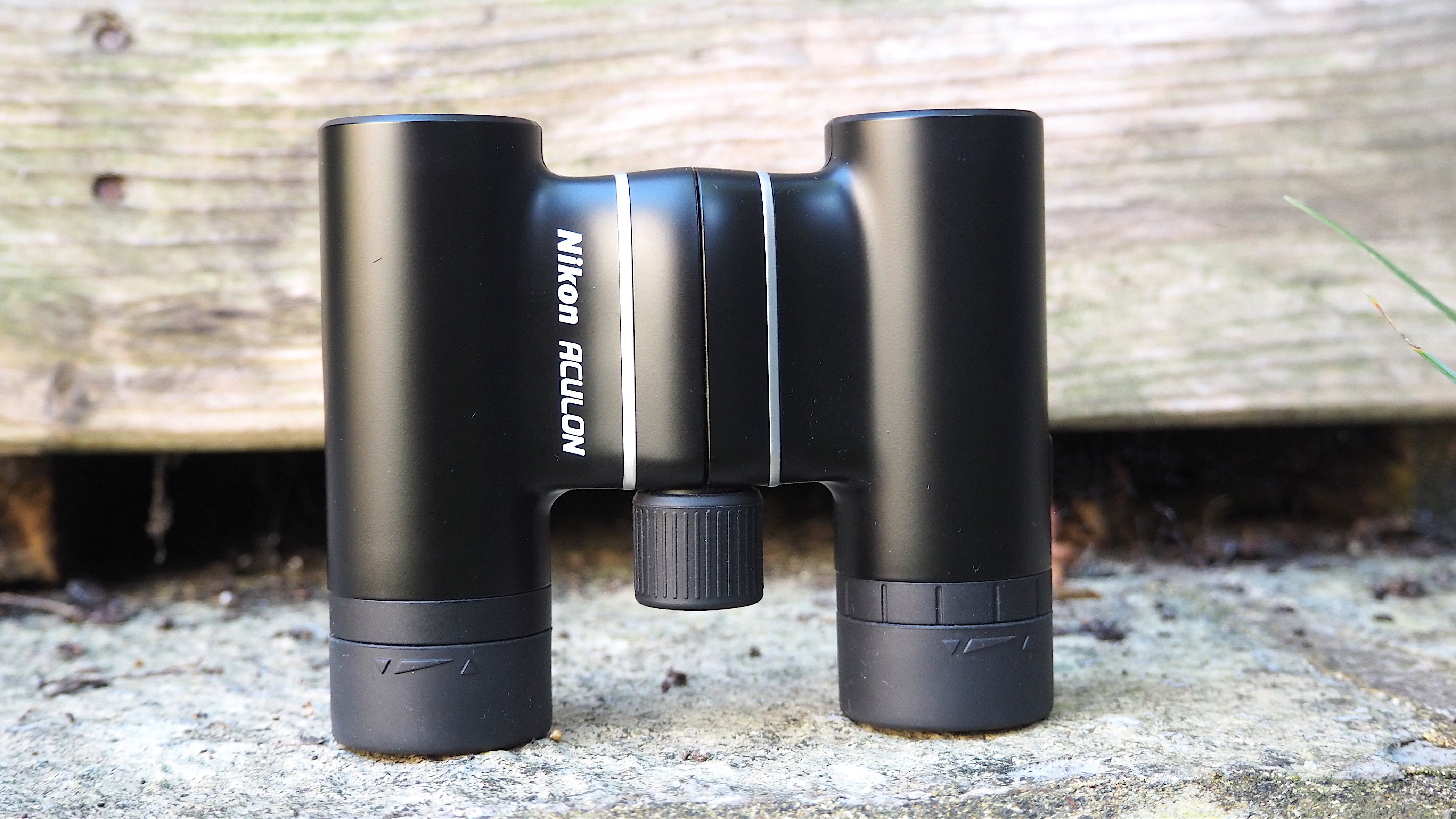
Nikon has achieved its enticingly minimalist proportions for the compact roof prism Aculon T02 10x21 binocular while still managing to include comfortable, use-enhancing features that we’d automatically expect to find on a larger alternative. These include twist-up eyecups and a dioptric adjustment dial encircling the right-side eyepiece. Our review sample also came with slip-on protective lens caps, undoubtedly easily mislaid as these are also small and there’s no option to tether to the body of the binocular. Included alongside this in our box were a manual and soft drawstring carry case that should hopefully prevent any scratches or blemishes when transporting in a bag with a load of other gear. On the binocular itself there is a small eyelet provided for attachment of a strap, though we didn’t find one in our box.
In terms of overall construction, essential aspects to note here include BK7 prisms and anti-reflective multi-coated optics to maximize light transmission despite the fairly modest 21mm objective lens size, which at least has ensured slim optical tubes. Nikon claims its coatings also provide improved contrast and color fidelity. Certainly, when using in daylight we found our view to be sharp and clear, so anyone who absolutely needs an unobtrusive and lightweight binocular doesn’t need to feel they are unduly compromising.
Build and handling
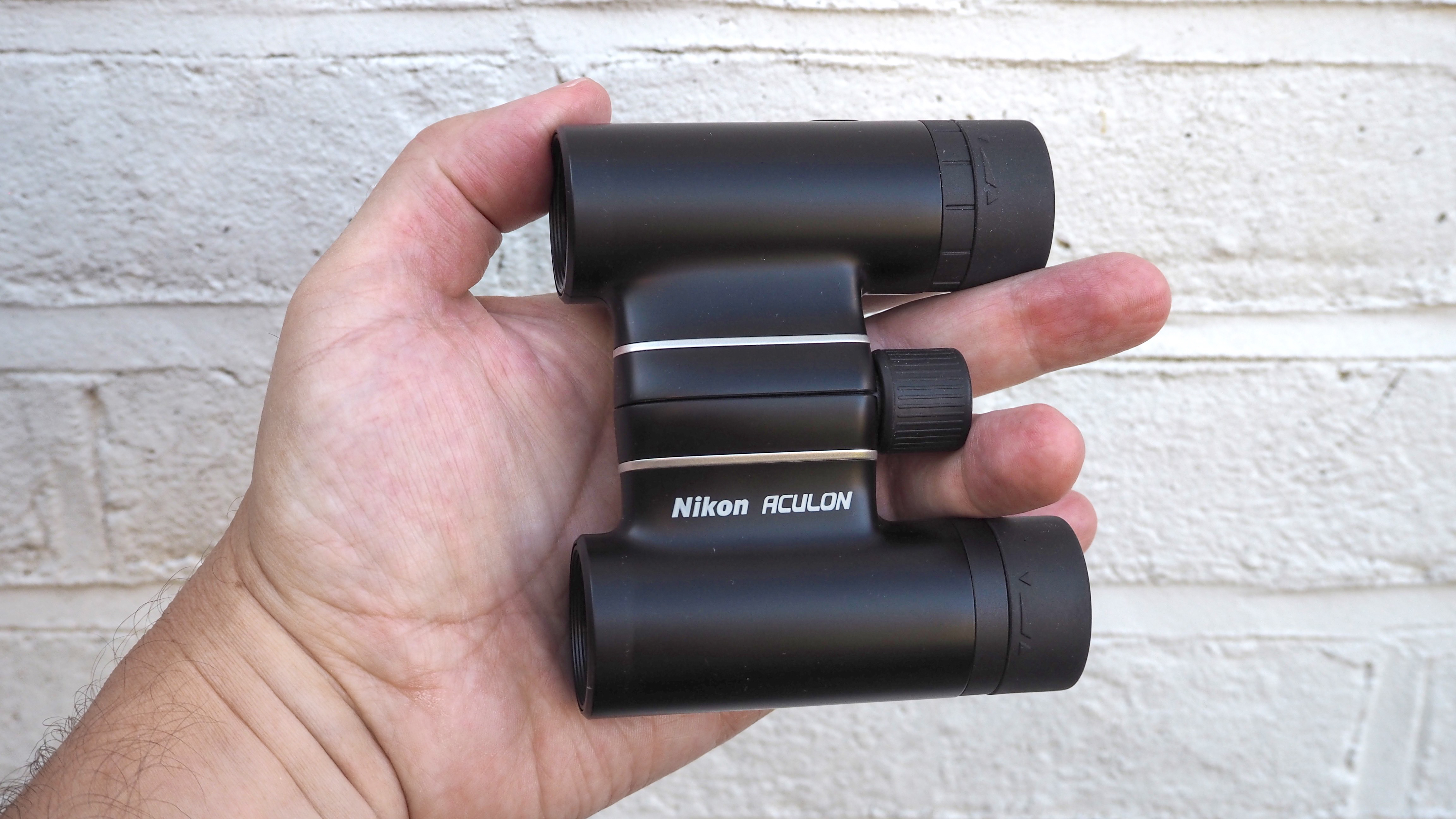
As described in our intro, the circumference of the Nikon Aculon T02 10x21 is broadly the same as that of a beermat or place mat for our coffee mug, while its twin lens barrels are the size of those chunky batteries we used to power boom-boxes in the 1980s. The design of the binocular is very contemporary though, with a silky smooth feel that suggests these probably aren’t the best to handle with wet fingers or when gloved, as they lack the rubber outer coating more usually provided to enable a firm grip.
Still, at least there is a tactile rubber surround to the eyepieces which makes them easier to adjust by hand, said adjustments providing comfort whether we’re wearing spectacles or not, and the dioptric adjustment ring is similarly rendered in rubber, though it’s a little stiffer to adjust. The focus adjustment wheel, which sits in a traditional central position between the eyepieces, has a thinner, ridged rubber, allowing our fingers to instinctively make quick focus alterations while our eyes remain glued to our subject/s.
Also well worth mentioning here is the hinged design that allows for some flexibility, in that the inter-pupillary distance between the eyepieces can be adjusted from between 56mm to 71mm to better match our own eyes.
Versus
Apart from alternative binoculars in the Nikon range, if we’re after a binocular of a similar specification that is not only very compact but is, additionally, waterproof, then we’d recommend checking out the Olympus 8x25 WP II. It’s just a smidgeon heavier than the Nikon and the magnification’s not quite as impressive as here but a very solid performance and build is offered nonetheless.
Alternatively, if we’re looking for a small, unobtrusive Nikon binocular for watching the game as well as the birds, with the bonus of featuring adjustable magnification built in, then the Nikon Sportstar Zoom in its 8-24x25 configuration – essentially a 3x zoom – is worth checking out. Of course, it’s larger than the Aculon T02 10x21 by virtue of its zooming capability and is more expensive with it. But there will be those who feel such observational flexibility is worth paying extra for.
A further option is the Nikon Prostaff P3, twice the size of the Aculon T02 10x21, but even that’s hardly prohibitively big. While still compact, it feels a bit more like a ‘proper’ binocular thanks to a solid build and rubberized coating, and, of the three Nikons described here, for us provides the best marriage of size and performance. If we could only choose one binocular from these examples and having the absolute smallest device possible wasn’t our overriding concern, then the 8x30 P3 would be our preferred option.
Performance
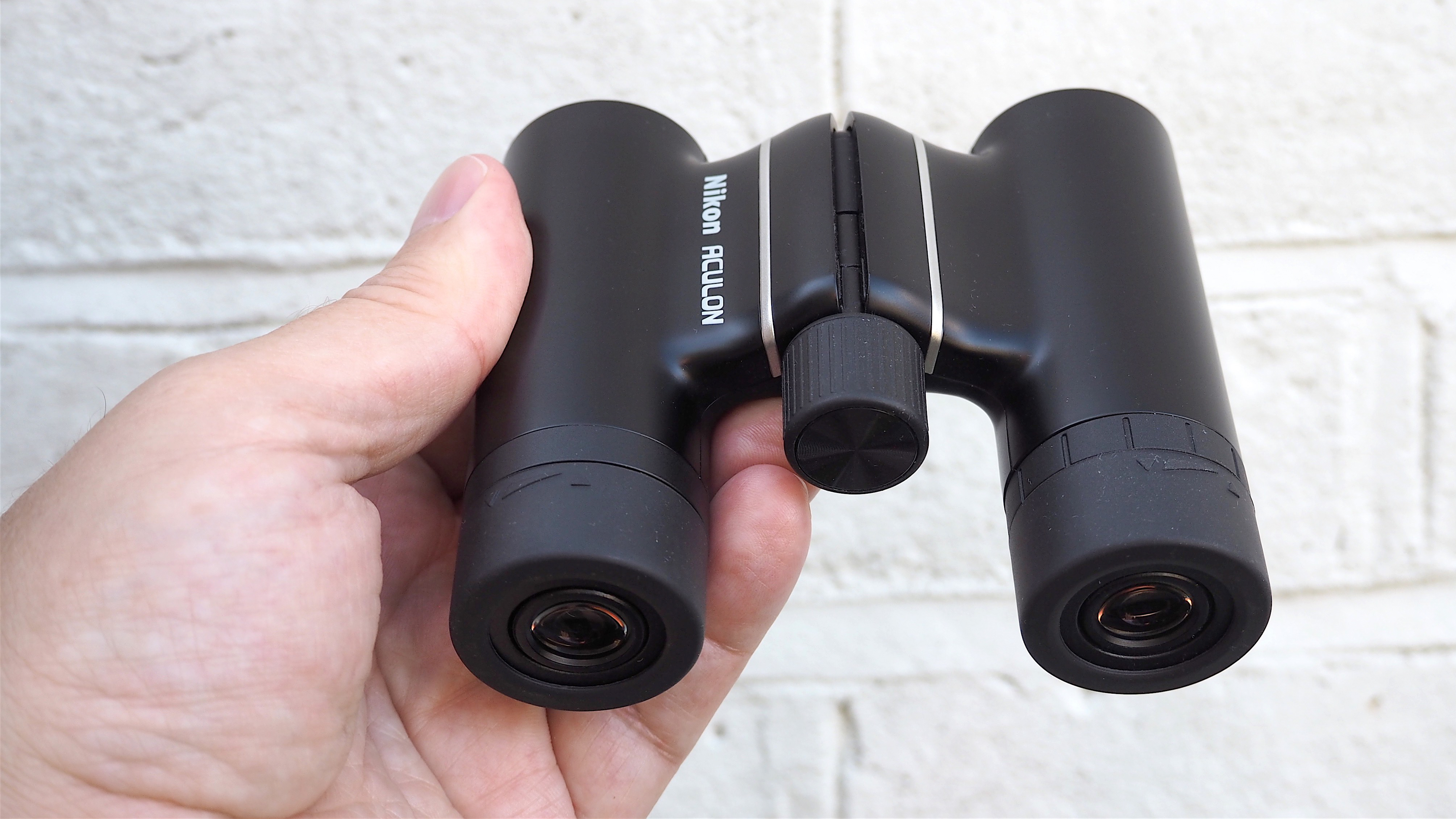
Nikon is world-renowned for its optical excellence so we’re expecting big things of this admittedly very small and compact binocular. Unsurprisingly then, as we’ve noted, the lenses here are multi-coated to boost light transmission and compensate for the relatively modest 21mm objective lens size. The 10x magnification offered is pretty decent given the overall size of the product, and doesn’t feel unduly compromised.
With daylight use, we found subjects are rendered bright and clear, colorfully so and with plenty of contrast to define them sharply. Though due to the Nikon Aculon T02 10x21’s lightweight build, there is inevitably some judder resulting from the hand wobble of the user that suggests these aren’t the best option for longer periods of static observation, it’s not to a distracting degree for shorter periods. We noticed the view did become less clearly defined however as light levels dropped, and the limitations of a small-ish objective lens made themselves known. But for daylight use, this unobtrusive option is both convenient and clear with it – and for the price and size we have very few complaints.
Verdict
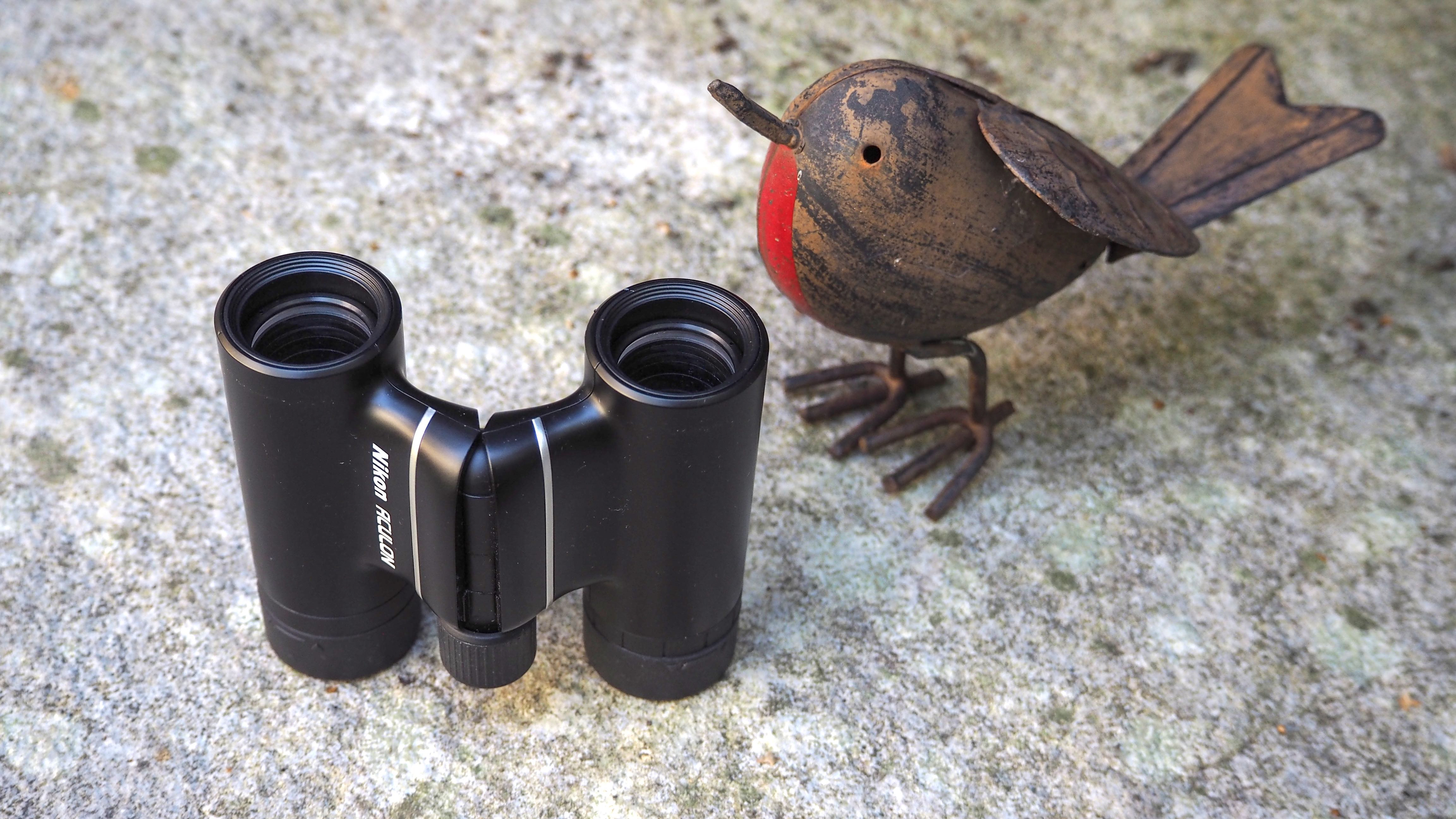
If we’re on the hunt for a very compact binocular we can slip into our pocket for use at concerts, sporting occasions or occasionally spotting the odd bit of wildlife, then the sleek and slender Nikon Aculon T02 10x21 comes up trumps. Though obviously the quality of image can’t match that of a larger device with wider field of view – and larger objective lens to boost its overall light-gathering ability – pricing is fair with it.
Ultimately if the smallest binocular possible is your aim, and you’re after one that doesn’t feel unduly compromised in terms of performance because of it, then this product should be high on your wish list for further investigation.
- The best binoculars
- The best binocular tripod adapters
- Best binocular harness
- The best night vision goggles & binoculars
- Best compact binoculars
- Best binoculars with cameras
- Best 8x42 binoculars
- Best budget binoculars for under $100
- The best thermal imaging binoculars
- The best image stabilized binoculars







